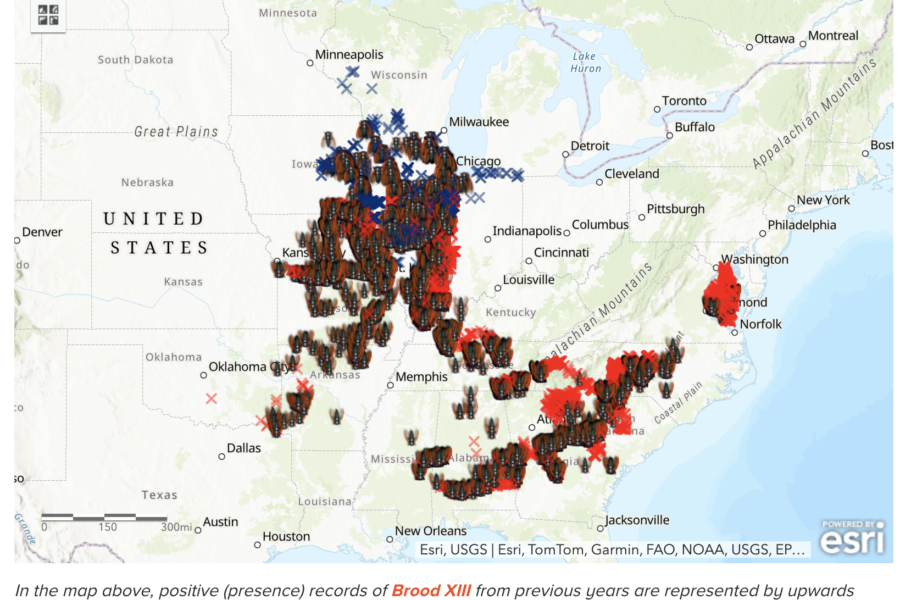Science Friday Two cicada broods on 13- and 17-year cycles coincide this spring, meaning trillions of buzzing insects across the South and Midwest.
It has begun. Legions of cheese-puff-sized insects have started to climb out of the dirt after spending more than a decade underground sucking sap from tree roots. Over the next month and a half, their numbers will continue to grow across the South and then the Midwest in what will become an emergence of trillions of periodical cicadas.
Dr. Jessica Ware, an entomologist at the American Museum of Natural History, finds the insects graceful. “They have these beautiful red eyes and lace-like wings,” she says.
This small sliver of their life cycle that’s visible to us, when males and females get their sole opportunity to mate, is a raucous and unforgettable affair. There can be nearly 30 cicadas per square foot. Such high densities are likely a survival strategy since cicadas that come aboveground in off-years would find themselves easy, edible targets. “There’s safety in numbers,” Ware explains. During a mass emergence, “you hopefully have made your predators full with your siblings or distant relatives and you yourself live to pass your genes on to the next generation.” (Ware says that those who feel squeamish about the coming “cicada-geddon” can reassure themselves with the fact that squirrels, chipmunks, birds and other animals will be treated to a rare, protein-rich bounty—and their numbers will grow as a result.)
